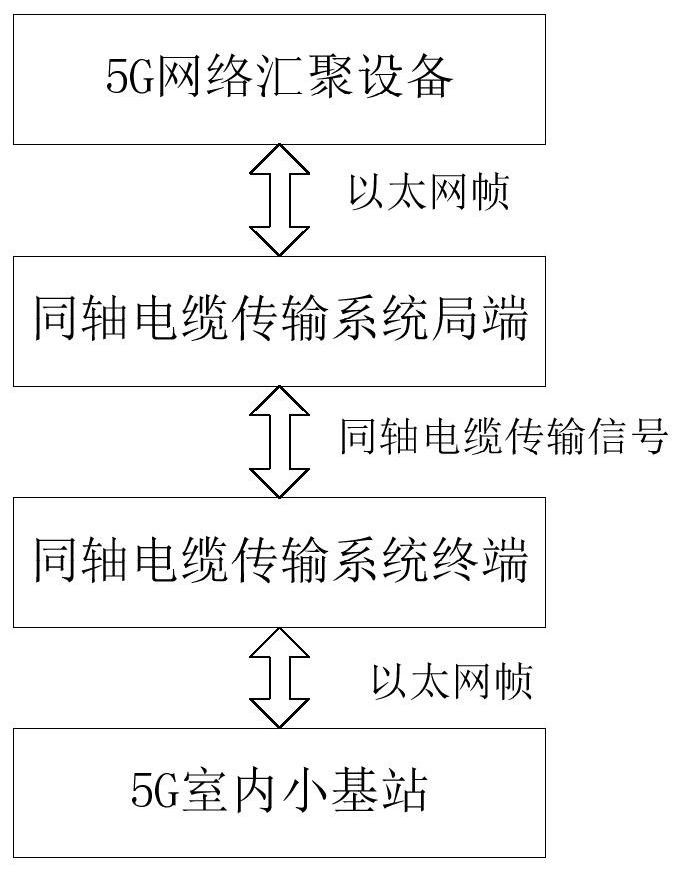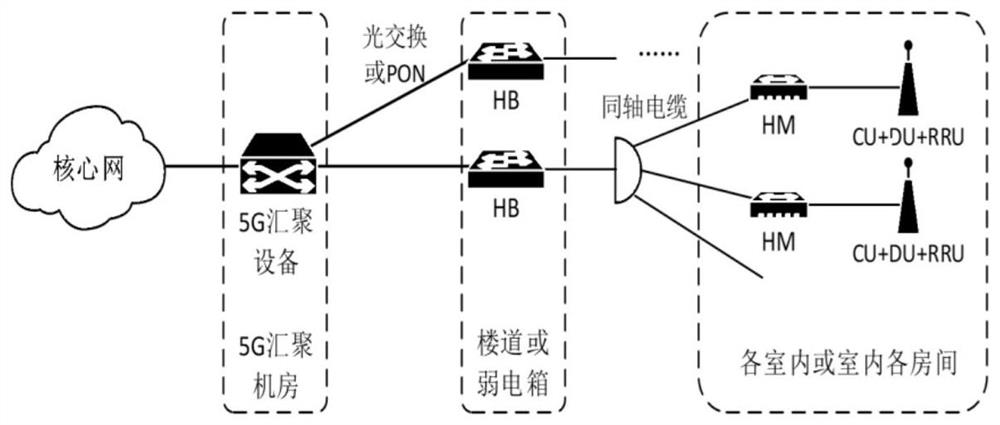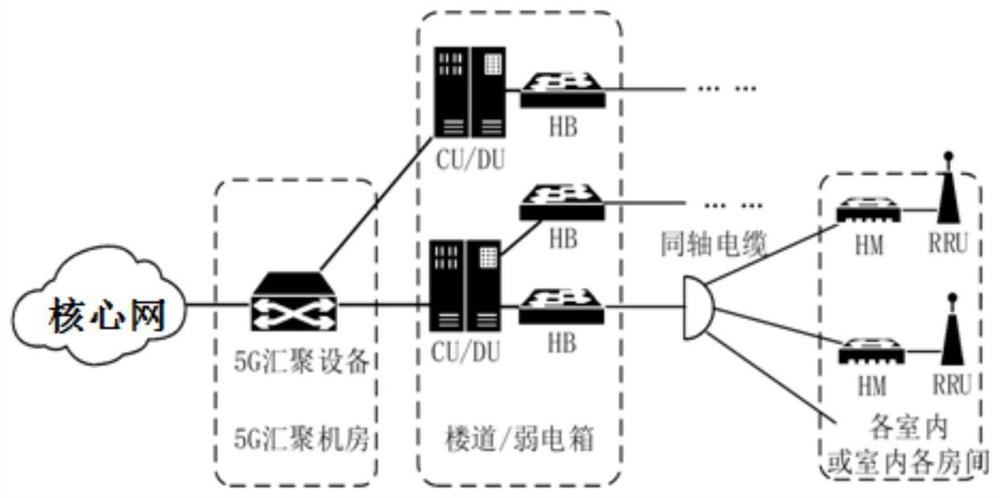5g indoor deep coverage system based on coaxial cable
A coaxial cable and coaxial cable transmission technology, applied in the field of communication, can solve the problems of no optical fiber interface, high difficulty and cost, limited feeder transmission capacity, etc., to achieve wide coverage, large channel capacity, and reduce network deployment costs. Effect
- Summary
- Abstract
- Description
- Claims
- Application Information
AI Technical Summary
Problems solved by technology
Method used
Image
Examples
Embodiment 1
[0037] Embodiments of the present disclosure provide a system for 5G indoor deep coverage based on coaxial cables, figure 1 It is a schematic structural diagram of a 5G indoor deep coverage system based on coaxial cables according to an exemplary embodiment, as shown in figure 1 As shown, a system for 5G indoor deep coverage based on coaxial cables, including:
[0038] The 5G indoor small base station is connected to the terminal equipment of the coaxial cable transmission system through the Ethernet interface;
[0039] Among them, the 5G indoor small base station can include a centralized unit, a distributed unit, and a remote radio unit, or a 5G indoor small base station can only include a distributed unit and a remote radio unit, or a 5G indoor small base station can also only include a remote radio unit. The indoor small base station is located inside a home user or in each room inside the home.
[0040] When the 5G indoor small base station only includes the distributio...
Embodiment 2
[0051] An embodiment of the present disclosure provides a system for 5G indoor deep coverage based on coaxial cables, figure 2 It is a schematic structural diagram of a system for performing 5G indoor deep coverage based on coaxial cables according to an exemplary embodiment.
[0052] like figure 2 As shown, the coaxial cable transmission system uses the HINOC coaxial cable transmission system.
[0053] Among them, the 5G indoor small base station provided by the embodiment of the present disclosure includes a centralized unit (CU), a distributed unit (DU) and a remote radio unit (RRU). Specifically, the 5G indoor small base station is located inside a home user or in each room inside the home. , the 5G indoor small base station is connected to the terminal equipment (HM) of the coaxial cable transmission system through an Ethernet interface, and the two can perform two-way data interaction in the form of IEEE802.3 Ethernet frames. The mobile terminal receives the data, th...
Embodiment 3
[0060] An embodiment of the present disclosure provides a system for 5G indoor deep coverage based on coaxial cables, image 3 It is a schematic structural diagram of a system for performing 5G indoor deep coverage based on coaxial cables according to an exemplary embodiment.
[0061] like image 3 As shown, the coaxial cable transmission system uses the HINOC coaxial cable transmission system. Wherein, the difference between the embodiment of the present disclosure and embodiment 2 is that the 5G indoor small base station in the embodiment of the present disclosure only includes a remote radio unit (RRU).
[0062] like image 3 As shown, when the 5G indoor small base station only includes the remote radio unit (RRU), the centralized unit (CU) and distributed unit (DU) can be set in the central office equipment (HB) and 5G aggregation equipment of the coaxial cable transmission system between.
[0063] Optionally, when the 5G small base station only includes a remote radio...
PUM
 Login to View More
Login to View More Abstract
Description
Claims
Application Information
 Login to View More
Login to View More - R&D
- Intellectual Property
- Life Sciences
- Materials
- Tech Scout
- Unparalleled Data Quality
- Higher Quality Content
- 60% Fewer Hallucinations
Browse by: Latest US Patents, China's latest patents, Technical Efficacy Thesaurus, Application Domain, Technology Topic, Popular Technical Reports.
© 2025 PatSnap. All rights reserved.Legal|Privacy policy|Modern Slavery Act Transparency Statement|Sitemap|About US| Contact US: help@patsnap.com



